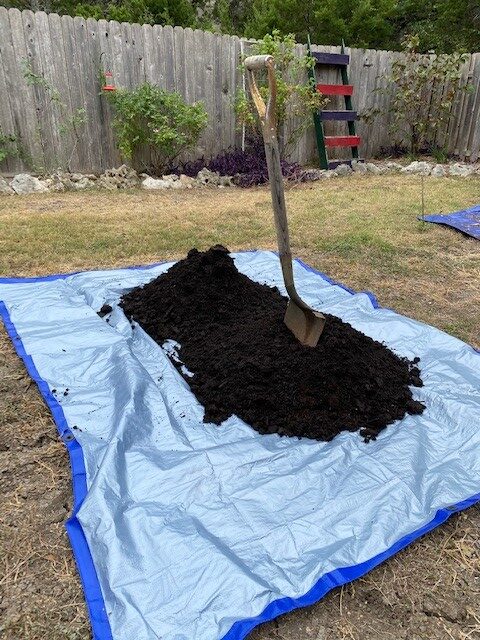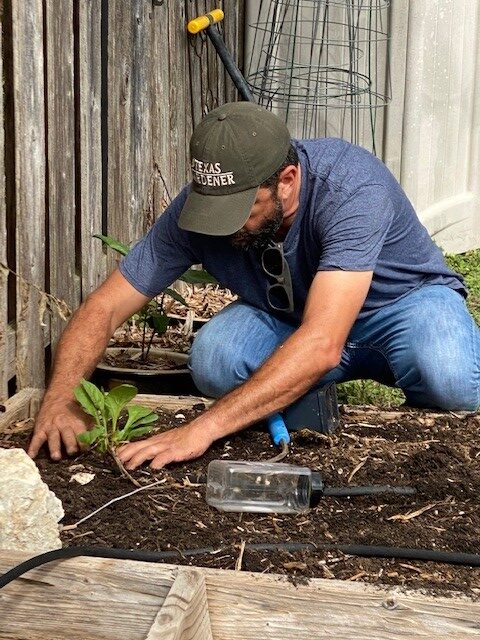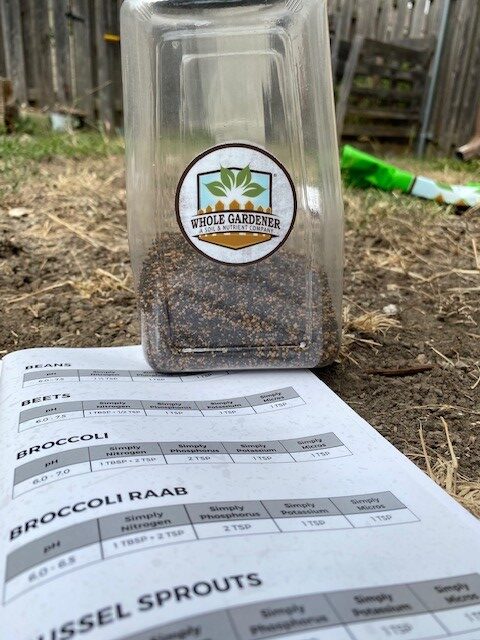Story and Photography by Ramez Antoun
My wife and I have been growing vegetables in raised beds for about eight years with a moderate amount of success. There are more challenges to raised bed gardening as opposed to in ground gardening, and some years are definitely better than others. Keeping the soil consistently moist as well as properly fed is slightly more difficult in raised beds. This past year I noticed a significant decrease in crop yields, and that’s what brought me to the Whole Gardener Plant Nutrient Kit.

When I opened the kit I was surprised to find so many parts; four different kinds of soil amendments, ( micro nutrients, potassium, nitrogen, phosphorus), measuring cups, measuring spoons, a mixing container, as well as some useful literature, (more on that later). The instructions were very easy to understand, so after I raked the mulch off the top of our raised beds I got started.

Step one of the Whole Gardener Plant Nutrient method was amending the beds with compost. I chose a mixture of mushroom compost and Gardenville Eco Thrive. I laid out a tarp in the yard and thoroughly mixed the composts together. I then moved the compost mixture to my beds using a five gallon bucket. I spread the compost about two inches thick. The compost was then mixed into the top six inches of the bed and smoothed using the back of a rake.

I use drip hose irrigation in my raised beds for watering. Using drip hoses is a much more efficient way of delivering water where it is needed with minimal waste, as well as keeping moisture off the leaves of our plants which can lead to mold or rot. Over the years our drip hoses have began to crack and dry and I decided to replace them while I had the beds deconstructed.

After amending the beds, step two was checking the pH balance of my soil. The kit came with several testing strips as well as easy to follow instructions. After checking all my beds I found they all registered at 7.0, a good neutral number that most vegetables can agree with. No adjustments necessary!!

Next came the fun part; the planting. For our fall/winter crops we chose a variety of lettuces and spinach, carrots, beets, cauliflower, broccoli, and Brussel sprouts. Using the Whole Gardener Recipe Book, which was included in the box, I mixed a specific recipe of nutrients for each plant. I simply scooped the correct amount of each amendment into the mixing container and gave it a good shake. I then planted my transplants and mixed the custom nutrient recipe of amendments into the soil around the plants. After planting all our raised beds I had plenty of the supplied nutrient kits left over. I plan to use in the spring. The beds were then mulched and watered thoroughly.

In conclusion, I found the Whole Gardener Plant Nutrient Kit to be very well organized and intuitive. Directions were plainly laid out and easy to follow. Time will tell how the veggies respond, but so far, this gardener is very impressed with this product!

